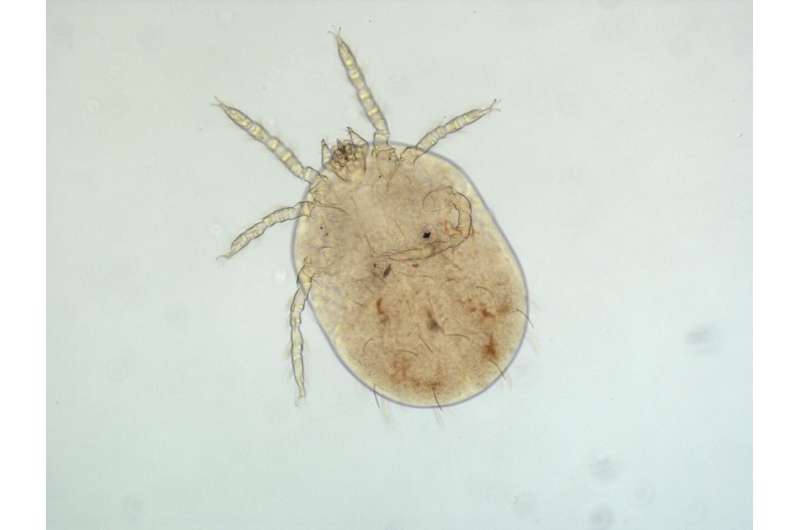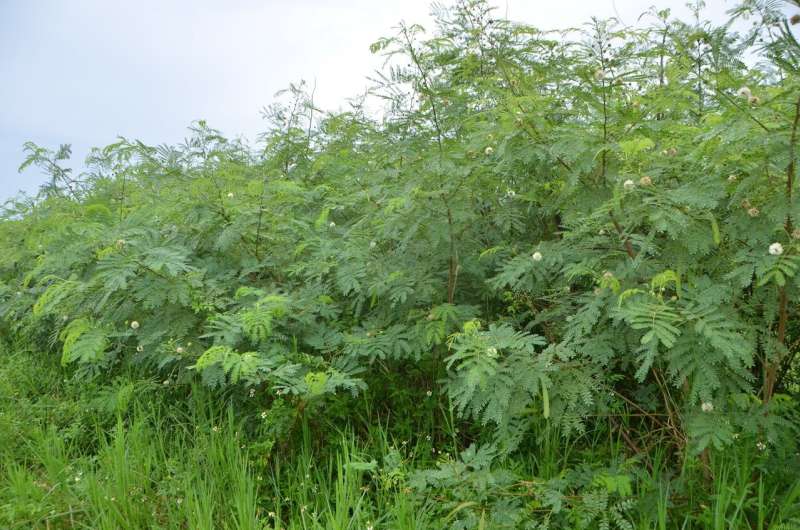Invasion of exotic plants elevates disease risks

Invasive plants can not only interfere with the recovery of native plants, but also become hotbeds of arthropod disease vectors. Increased numbers of chigger mites that can transmit deadly scrub typhus were observed under exotic invasive plants with facilitated by industrialization, according to disease ecologist Chi-Chien Kuo and colleagues from National Taiwan Normal University and Taiwan Centers for Disease Control in a new study published in PLoS Neglected Tropical Diseases.
The white popinac Leucaena leucocephala, native to Central America, is among 100 of the world's worst invasive alien species, and is well-adapted to disturbed regions with dry and poor soil. The Penghu Islands, located in the Taiwan Strait, are characterized by poor soil fertility and hot summers and dry, very windy winters; local farmers commonly surround fields with walls made of coral stones to fend off strong winds. Industrialization and rural-to-urban migration in Taiwan since the 1970s has triggered widespread abandonment of agricultural fields. The result is that around 75% of farmlands in Penghu are currently not cultivated. These abandoned fields are almost exclusively invaded by the white popinac, with density reaching 30,000 to 50,000 stands per hectare and soil harboring as many as 2,000 seeds per square meter. This has made eradicating this invasive plant a great challenge.
Penghu is also a hotspot of scrub typhus, a potentially lethal rickettsial disease with a recent increase in human cases in several Asian countries. This disease is transmitted by chigger mites in their larval stage (chiggers) that typically feed on wild rodents. To investigate whether the common occurrence of scrub typhus in Penghu is related to the invasive plants, the researchers trapped rodents and counted the number of chiggers on their bodies in sites with invasive plants, agricultural plantings, or human residence.
They found that exotic plant invasion sites not only harbored more chiggers than the other two habitat types, the number of chiggers was also more stable across seasons in invasion sites; thus, the researchers suggest that invasive plants might help buffer the negative influence of unfavorable climates during the winter and be a temporary refuge for chiggers. The infection rate of scrub typhus-causing pathogens in chiggers was also the highest in invasion sites.

In addition, more chiggers in invasive sites was related to their harboring more Lesser ricefield rats (Rattus losea), which carried many fully engorged chiggers. By contrast, chiggers collected from the abundant, peridomestic Asian house shrew (Suncus murinus) were hardly fed. This implies that preserving this shrew might lower disease risks by attracting chiggers that may not get enough nutrition to molt to the next life stage.
Few studies have attempted to learn how human health can be affected by invasive plants, said Kuo. "In this study, we not only show that invasive plants can have negative influence on human health, but also go a step further to highlight an important but largely neglected issue that socioeconomic change can have unexpected downstream effects on disease emergence via a change in land cover."
More information: Wei CY, Wang JK, Shih HC, Wang HC & Kuo CC. 2020. Invasive plants facilitated by socioeconomic change harbor vectors of scrub typhus and spotted fever. PLoS Neglected Tropical Diseases 14: e0007519. doi.org/10.1371/journal.pntd.0007519




















